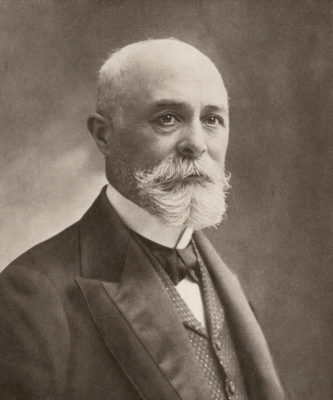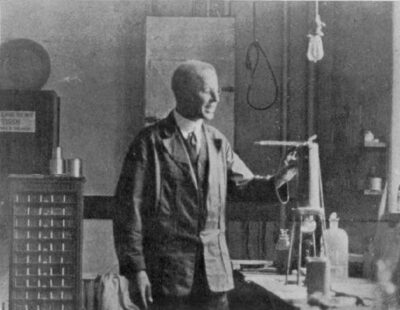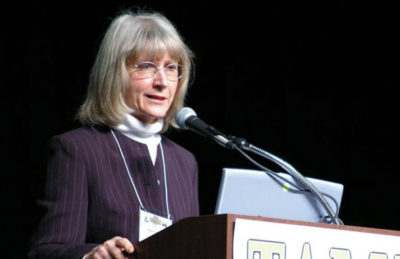Dating fossils using radioisotopes is the modern method for estimating the age of a fossil, rock, or mineral. A recent Public Broadcasting Service (PBS) program illustrates why there are good reasons to question any age dating theory, including date estimates using radioisotopes.
The case-in-point, a “1.8 million-year-old skull,” the PBS reported, “may revise [our] understanding of human evolution.” While the fossilized skull was dated using radioisotopes as 1.8 million years old, the skull was discovered in a medieval ninth-century village in the former Soviet Republic of Georgia.
While the practice of dating fossils has long been popular, the methods and results have historically been controversial. Given the age difference between the 1.8 million-year-old skull and the ninth-century village, assessing the methods used are essential for establishing a scientifically valid age for the skull.
From Greek philosophers to nuclear physicists, history has recorded a wide range of methods and results used by these diverse groups of investigators.
B.C. Dating Methods
Aristotle, a 300 B.C. Greek philosopher is credited as the first to estimate the age of the earth. The earth, Aristotle argued, has existed from eternity past.
The Roman poet Lucretius, the intellectual heir to the Greek atomists, argued that the age of the earth is more recent since historical records before the Trojan War do not exist.
Early A.D. Dating Methods
Old Testament genealogies listed in Genesis have been used to estimate the age of the Earth. The most famous and widely used estimate was published in 1654 by Archbishop James Ussher of Ireland and calculated Earth’s origin to be 4004 B.C. using this method.
John Herschel (1792–1871), an English mathematician, astronomer, and chemist, argued for “many thousand millions of years.” Since Darwin was exploring the age of Earth concepts, he successfully arranged a meeting with Herschel when the HMS Beagle ported in Cape Town, South Africa, in 1836. Herschel originated the use of the Julian day system in astronomy.
English geologist Charles Lyle (1797–1875) in the Principles of Geology (1830–33) argued for an indefinitely long age for the Earth, where “the present is the key to the past.” His theory is known as the uniformitarianism theory of geology. Over the history of the Earth, Lyell argued, no sudden climatic changes occurred, like the massive global flooding event documented in Genesis by Moses, known as catastrophism.
While on the 5-year voyage on the HMS Beagle, Darwin read Lyle’s three volumes of the Principles of Geology. Eventually, as looking “through Lyell’s eyes,” Darwin synchronized the spheres of Lyell’s theory of geology and his theory of evolution in the Origin of Species. Although collegially close, Lyell eventually, and only reluctantly, gave a measure of credence to Darwin’s theory of natural selection.
In the wake of the Origin of Species publication, however, Irish physicist William Thomson Kelvin (1824–1907) was the first to publicly challenge the blending of Lyell’s gradualistic “vaguely vast age” approach to geology and Darwin’s theory of natural selection.
During Darwin’s lifetime, while estimating the age of the universe continued as a work-in-progress, many scientists increasingly viewed the age of the universe as significantly longer than Ussher’s calculated estimate. Since then, scientists have increasingly turned to radiometric dating.
Origins of Radiometric Dating
 The discovery of radioactivity in 1896 by Henri Becquerel (pictured left), a French physicist and chemist, revolutionized the approach to dating fossils, rocks, and minerals. The atoms in fossils, rocks, and minerals throughout the universe were found to contain radioactivity which is slowly emitted over time. This process is known as radioactive decay.
The discovery of radioactivity in 1896 by Henri Becquerel (pictured left), a French physicist and chemist, revolutionized the approach to dating fossils, rocks, and minerals. The atoms in fossils, rocks, and minerals throughout the universe were found to contain radioactivity which is slowly emitted over time. This process is known as radioactive decay.
In just the following decade, in 1907, Yale University professor Bertram Boltwood (pictured right) was the first to publish how the amount of radioactivity decay may be useful in estimating the time span since their formation. Boltwood is credited as being the first to introduce a uranium-lead dating technique to determine the age of geological samples.
since their formation. Boltwood is credited as being the first to introduce a uranium-lead dating technique to determine the age of geological samples.
Radioactive “parent atoms” decay into stable “daughter atoms” over time. Parent and daughter atoms are also known as parent and daughter isotopes. By measuring the number of remaining unstable radioactive atoms and comparing it to the number of stable daughter atoms, the estimated age of the material can be calculated.
Decay Chain
This decay process from a parent to a daughter isotope is known as the decay chain or the radioactive cascade. For example, Uranium (atomic number 92) decays into thorium (atomic number 90). This decay chain process releases energy.
Isotopes decay spontaneously. The time it takes for a single parent atom to decay to an atom of its daughter isotope, however, varies widely. According to WIKIPEDIA –
“One of the properties of an isotope is its half-life, the time by which half of an initial number of identical parent radioisotopes have decayed to their daughters… Half-lives have been determined in laboratories for many radioisotopes (or radionuclides). These can range from nearly instantaneous (less than 10−21 seconds) to more than 1019 years.”
Carbon Dating Facts
-
- Carbon dating is a widely-used method applied to establish the age of organic material, things that were once living.
- Dating methods measuring elements that decay over time, not time itself.
- Live organisms absorb C-14, but once an organism dies absorption stops.
- Living things have carbon in them in various forms. The dating method makes use of the fact that a particular isotope of carbon called C-14, with an atomic mass of 14, is radioactive and decays at a rate that is well known.
- The most abundant isotope of carbon in the atmosphere is carbon-12, or a carbon atom whose atomic mass is 12.
- A very small amount of carbon-14 is also present. The ratio of carbon-12 to carbon-14 in the atmosphere is almost static and is known.
- Plants get their carbon through the process of photosynthesis, while animals get it mainly through food.
- Because plants and animals get their carbon from the atmosphere, they, too, acquire carbon-12 and carbon-14 isotopes in roughly the same proportion as is available in the atmosphere.
- But when they die, the interactions with the atmosphere stops. There is no further intake of carbon (and no outgo either, because metabolism stops).
- Now, carbon-12 is stable and does not decay, while carbon-14 is radioactive. Carbon-14 reduces to one-half of itself in about 5,730 years. This is what is known as its ‘half-life’.
- Radiocarbon dating is only effective on fossils younger than 50,000 years.
- So, after a plant or animal dies, the ratio of carbon-12 to carbon-14 in the body, or its remains, begins to change.
- This change can be measured and can be used to deduce the approximate time when the organism died.
- Carbon dating cannot be applied to determine the age of non-living materials, like rocks.
Calculation Assumptions
 The process of determining a radiometric age requires the application of a range of assumptions. Radiometric dating is not absolute, it is a calculated age estimate. To calculate the date, the investigator selects from a range of assumptions, including the extremely highly variable half-life of the isotope. As the executive director of the National Center for Science Education (NCSE), Eugenie Scott explains in her book entitled Evolution vs. Creationism from a professor of physics at the Massachusetts Institute of Technology (MIT), Philip Morrison –
The process of determining a radiometric age requires the application of a range of assumptions. Radiometric dating is not absolute, it is a calculated age estimate. To calculate the date, the investigator selects from a range of assumptions, including the extremely highly variable half-life of the isotope. As the executive director of the National Center for Science Education (NCSE), Eugenie Scott explains in her book entitled Evolution vs. Creationism from a professor of physics at the Massachusetts Institute of Technology (MIT), Philip Morrison –
“If certain assumptions are made about it [radiometric dating], then it can yield a date which could be called the apparent age. Whether or not the apparent age is the true age depends completely on the validity of the assumptions.”
Measuring the concentration of elements is empirical; however, scientists can only speculate on assumptions regarding the element stability, half-life, and the original concentration at the beginning. Scott continues quoting Morrison –
“Since there is no way in which these assumptions can be tested, there is no sure way (except by divine revelation) of knowing the true age of any geological formation.”
In recognizing these limitations, “the highly speculative nature of all methods of geochronometry [radiometric dating] becomes apparent,” Scott continues, “one realizes that not one of the above assumptions is valid! None are provable, or testable, or even reasonable.”
These assumptions include –
-
- Atmospheric radiation concentrations have been constant, despite known bursts of cosmic radiation and Earth’s core. “If the level of atmospheric 14C were constant, this would be easy. However, it has fluctuated significantly throughout history.” (PhysOrg, Proceedings on the Royal Society)
- Production of parent isotopes has been constant since the origin of the specimen.
- The ratio and concentrations of the isotope in the sample since the origin of the specimen are known.
- Decay rates are constant since the origin of the specimen
- Radiation exposure has not occurred since the origin of the specimen
- No daughter (stable) elements existed in the specimen before the origin of the specimen
- Use of scientifically validated radioisotope decay rates
- Isotope concentration changes only stem from the decay process
The first assumption, “atmospheric radiation concentrations have been constant,” is now known not to be true. “The amount of carbon-14 in the atmosphere fluctuates through time; it’s not a constant baseline,” Julie Hoggarth of Baylor University explains for PHYS.ORG in the paper “Scientists develop a statistical fix for archaeology’s dating problem.”
Solar flares, also known as solar storms, produce radiation across the electromagnetic spectrum, although with different intensities. While not as intense as visible light on Earth, they can be very bright at particular spectral lines producing bremsstrahlung in X-rays and synchrotron radiation. The first solar flares were first observed by Richard Carrington and Richard Hodgson independently on 1 September 1859.
Experimental Science
Different methods of radiometric dating vary in the timescale over which they are accurate. “We must remember that the past is not open to the normal processes of experimental science,” Scott continues –
“A scientist cannot do experiments on events that happened in the past… Scientists do not measure the age of rocks; they measure isotope concentrations… [and] the age is calculated using assumptions about the past that cannot be proven.”
Calculations require that neither the parent nuclide nor the daughter product can enter or leave the material after its formation.
Correlation Testing
To test for alteration or contamination, using different methods and different minerals from different locations should be tested. Strong correlations indicate a more reliable dating estimate; weak correlations increase the validity of the dating into question. As Scott points out –
“If the dating methods are an objective and reliable means of determining ages, they should agree [correlate].
Using different methods and minerals, more often than not, do not correlate. According to Scott –
“With radiometric dating, the different techniques often give different results.”
Scott lists the following factors why radiometric dating, even using the best methods and technology, may never be scientifically valid –
-
- No one has ever measured decay rates directly
- If assumed decay rates are in the range of billions of years, it is impossible to determine the actual decay rate from measurements over only a few decades
- Decay rates are poorly known
- Decay rates are affected by the physical environment – including the effects of Earth’s mantle.
- Original parent element concentration is not known, and no method exists to measure the original concentration
- The original daughter decay product concentration is not known, and no method exists to measure the original concentration
More recently, a radioactive isotope Beryllium-10 “blip” found deep beneath the Pacific Ocean reported in 2025 is evidence of previously unknown recent radioactive exposure. The global effect on other radioactive isotopes is unknown.
Therefore, the untestable assumptions required for calculating a radiometric date place the date as a speculation, yet to be validated through falsification testing.
Global Flood and Plate Tectonic Events
The fossils found today result globally from the massive global flooding and plate tectonic events documented by Moses in Genesis chapters 7 and 8.
“In the six hundredth year of Noah’s life, on the seventeenth day of the second month—on that day all the springs of the great deep burst forth, and the floodgates of the heavens were opened. 12 And rain fell on the earth forty days and forty nights.” Genesis 7:11.
“Now the springs of the deep and the floodgates of the heavens had been closed, and the rain had stopped falling from the sky. Genesis 8:2.
Evidence point to the fact that plants and animals were alive at the time they were nearly instantly buried.
Dating Fossil Tips
While an estimated age of a fossil can be obtained using a radiometric dating method, the accuracy will be highly dependent upon assumptions and testing methods.
Without knowing the assumptions, testing method, and correlation assessment, any estimated date, published or otherwise, should not be considered a scientifically valid age.
DNA Stability Over Millions of Years?
Recent reports speculate fossilized DNA to be millions of years old. Science writer Ewen Callaway for the journal Nature in 2021 wrote the article “Million-year-old mammoth genomes shatter the record for oldest ancient DNA. Permafrost-preserved teeth, up to 1.6 million years old, identify a new kind of mammoth in Siberia.”
However, how the dating is incongruent with findings by others. Karishma Matange, James M. Tuck & Albert J. Keung published “DNA stability: a central design consideration for DNA data storage systems” in Nature Communications (2021). In laboratory testing, the paper reported –
“Eighty percent of the encapsulated DNA was recovered while only 0.05% of the unprotected dried DNA survived. Grass and colleagues estimated that encapsulation in silica particles could maintain DNA for 20–90 years at room temperature.”
Given the limited physical stability properties of DNA, dating methods using DNA in preserved specimens that yield dates thousands of years or more require further scientific validation.
Dating Fossils is a subcategory of the Fossil Record
More
Subcategories of the Fossil Record include –
-
- Darwin’s Dilemma
- Dating Fossils (current page)
- Fossil Record by the Decade
Darwin Then and Now is an educational resource on the intersection of evolution and science, highlighting the ongoing challenges to the theory of evolution.
Move On
Explore how to understand twenty-first-century concepts of evolution further using the following links –
-
- The Understanding Evolution category showcases how varying historical study approaches to evolution have led to varying conclusions. Subcategories include –
- Studying Evolution explains how key evolution terms and concepts have changed since the 1958 publication of The Origin of Species.
- What is Science explains Charles Darwin’s approach to science and how modern science approaches can be applied for different investigative purposes.
- Evolution and Science (current page) feature study articles on how scientific evidence influences the current understanding of evolution.
- Theory and Consensus feature articles on the historical timelines of the theory and Natural Selection.
- The Biography of Charles Darwin category showcases relevant aspects of his life.
- The Glossary defines terms used in studying the theory of biological evolution.
- The Understanding Evolution category showcases how varying historical study approaches to evolution have led to varying conclusions. Subcategories include –



